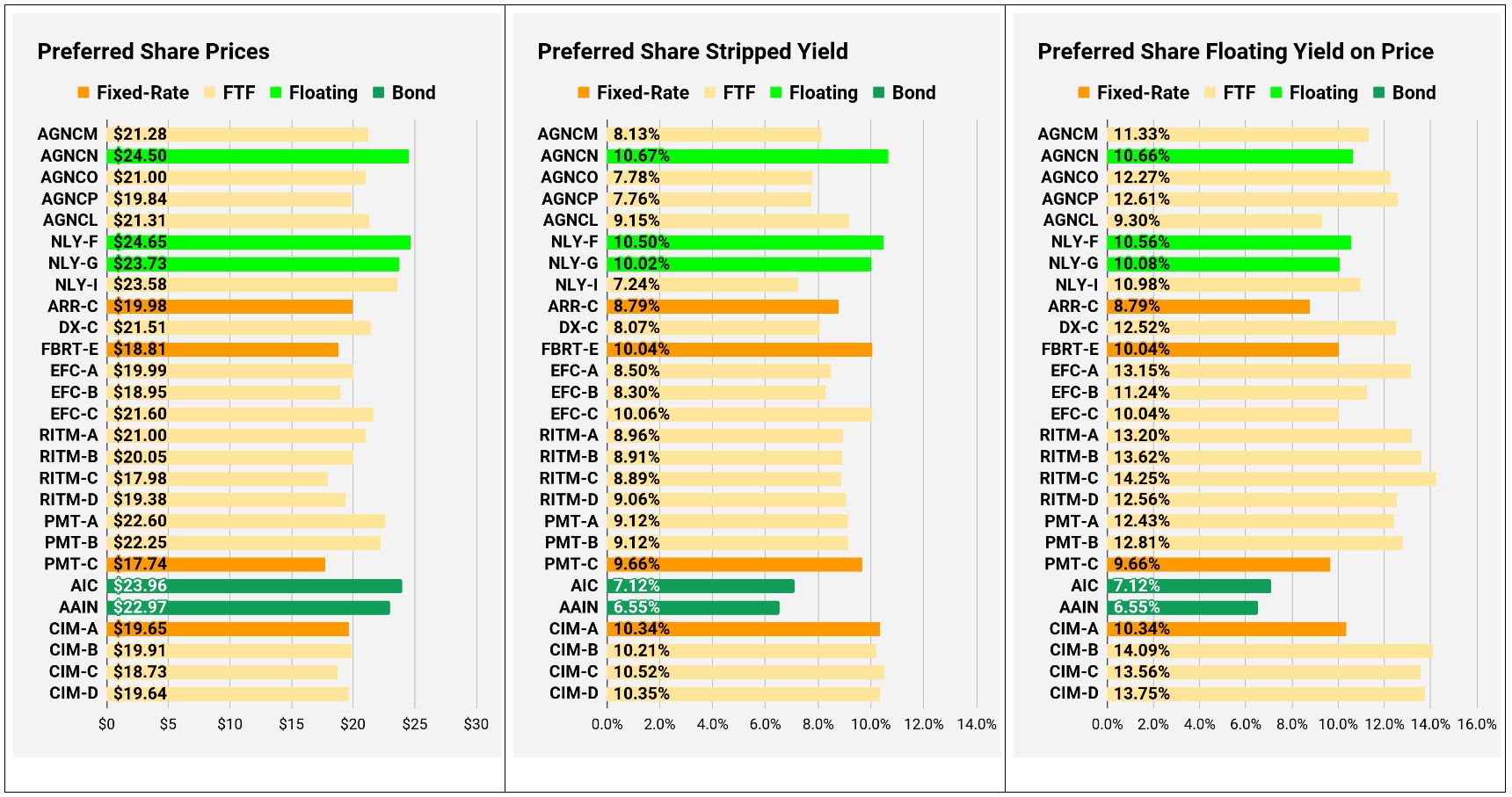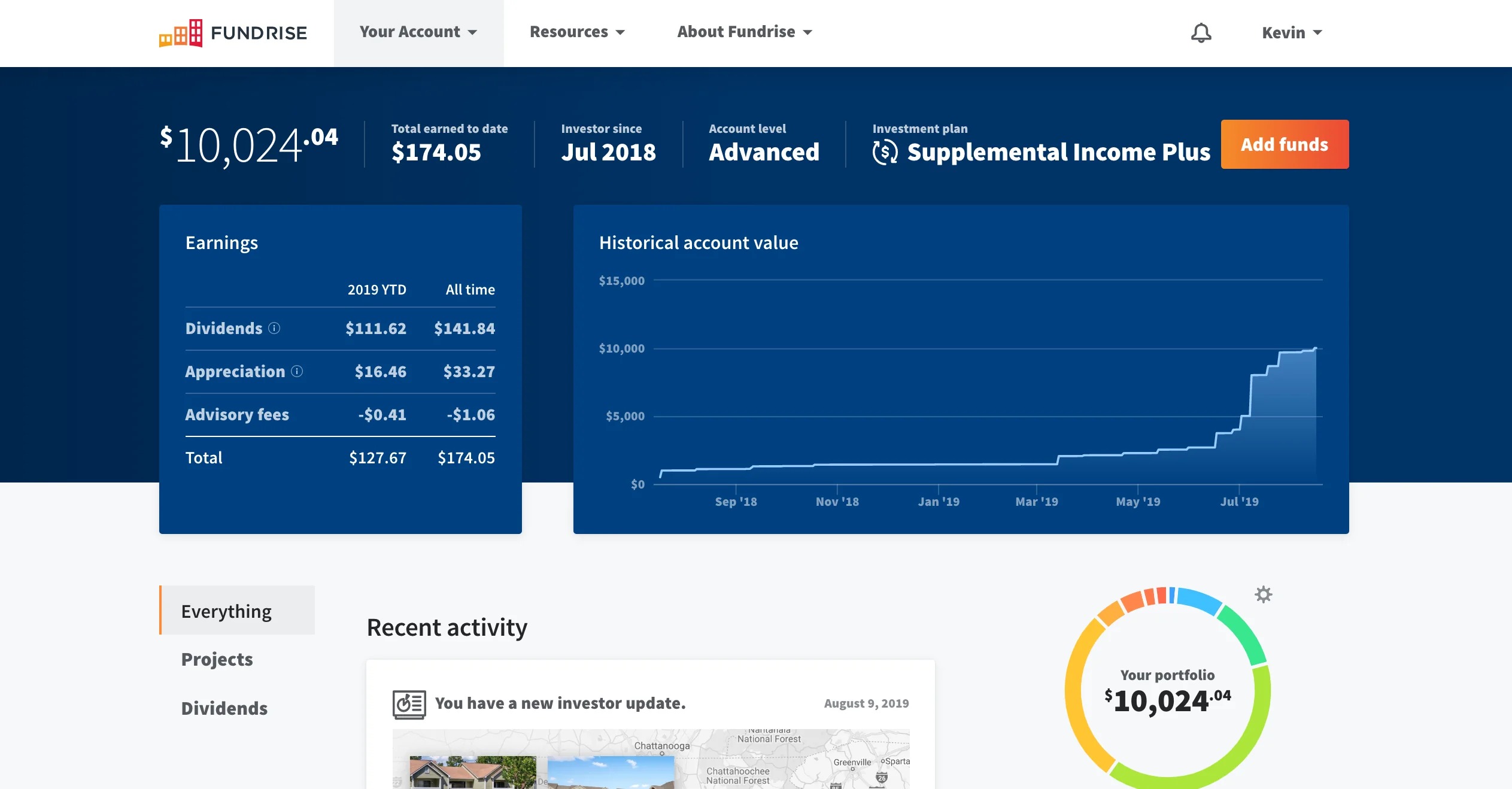

Finance
How Often Do REITs Pay Dividends?
Published: January 3, 2024
Discover how often REITs pay dividends and understand the financial benefits. Invest wisely in the world of finance and maximize your returns.
(Many of the links in this article redirect to a specific reviewed product. Your purchase of these products through affiliate links helps to generate commission for LiveWell, at no extra cost. Learn more)
Table of Contents
Introduction
Real Estate Investment Trusts (REITs) are an increasingly popular investment option for those looking to diversify their portfolio and generate regular income. As a form of collective investment, REITs allow investors to pool their capital to invest in a diverse range of properties, such as residential complexes, office buildings, shopping malls, and industrial warehouses.
One of the key attractions of investing in REITs is the potential for consistent and reliable dividend payments. Dividends are a share of profits that are distributed to shareholders, and they form an essential part of the total returns that investors can expect from their REIT investments.
In this article, we will explore the topic of how often REITs pay dividends. We will examine the factors that influence the frequency of dividend payments, the types of dividends offered by REITs, and provide examples of common dividend payment schedules.
By understanding the dividend payment structure of REITs, investors can make informed decisions about their investment strategies and align their expectations with the income generation potential of these investment vehicles.
So, let’s dive in and uncover the intricacies of REIT dividends and their payment schedules.
Understanding REIT Dividends
Before we delve into the frequency of REIT dividend payments, it is essential to have a clear understanding of what dividends are and how they are generated by REITs.
A dividend is a portion of a company’s earnings that is distributed to its shareholders. In the case of REITs, these earnings come from the rental income generated by the properties that the REIT owns and operates.
REITs are legally required to distribute a significant portion of their taxable income to shareholders in the form of dividends. By doing so, REITs, which enjoy certain tax benefits, avoid double taxation at the corporate level.
When investors purchase shares of a REIT, they become shareholders and are entitled to a share of the rental income generated by the properties owned by the REIT.
It’s important to note that investing in REITs is different from investing in traditional stocks. While stocks that pay dividends may have varying dividend yields, REITs are specifically designed to generate rental income and distribute it as dividends to their shareholders.
The dividend income from REITs can serve as a stable and consistent source of income for investors, making them particularly attractive to income-focused investors, such as retirees or those seeking dependable cash flow.
However, it’s crucial to understand that not all REITs pay dividends, and not all dividend-paying REITs have the same dividend payment frequency. The frequency of dividend payments depends on various factors, including the type of REIT, its financial performance, and regulatory requirements.
Next, we will explore the different types of dividends offered by REITs and how they can impact dividend payment schedules.
What Are REITs?
A Real Estate Investment Trust (REIT) is a company that owns, operates, or finances income-generating real estate. REITs provide a way for individuals to invest in real estate without the need for directly owning and managing properties.
REITs can be publicly traded on stock exchanges, allowing investors to buy and sell shares easily. They offer an opportunity for investors to access the real estate market and benefit from potential income and capital appreciation.
To qualify as a REIT, a company must meet specific requirements set by the Internal Revenue Service (IRS). These requirements include distributing a substantial portion of its earnings as dividends to shareholders and investing a significant portion of its assets in real estate.
REITs come in various types, including equity REITs, mortgage REITs, and hybrid REITs, each with its own investment focus and income generation strategy.
1. Equity REITs: These are the most common type of REITs. Equity REITs own and operate income-generating properties, including residential, commercial, and industrial properties. They earn rental income from leasing these properties to tenants.
2. Mortgage REITs: Mortgage REITs invest in real estate mortgages or mortgage-backed securities. They primarily generate income through interest payments and loan origination fees. Unlike equity REITs, mortgage REITs do not own physical properties.
3. Hybrid REITs: Hybrid REITs combine elements of both equity REITs and mortgage REITs. They may invest in a mix of properties and mortgage assets, diversifying their income streams.
REITs provide individuals with an opportunity to invest in real estate assets, which historically have shown resilience and the potential for long-term growth. By investing in REITs, investors can access a diversified portfolio of properties across different sectors and geographic locations, without the need for substantial capital or involvement in property management.
Now that we have a clear understanding of what REITs are, let’s explore how REITs generate income and why dividends play a crucial role for investors.
How Do REITs Generate Income?
REITs generate income through various sources related to their real estate holdings. The primary method of income generation for REITs is through the rental income received from leasing out their properties to tenants.
When a REIT owns residential, commercial, or industrial properties, it collects regular rental payments from the tenants occupying those properties. This rental income forms a significant part of the overall income generated by the REIT.
In addition to rental income, REITs may also generate revenue through other means, such as:
- Property Sales: REITs may sell properties from their portfolio, which can result in capital gains. These gains contribute to the REIT’s overall income and may be distributed to shareholders as dividends.
- Interest and Dividend Income: REITs may earn interest and dividend income by investing in various financial instruments, such as bonds or stocks. This income further adds to the total earnings of the REIT.
- Fee Income: Some REITs provide property management, leasing, or development services to other real estate entities. They earn fees for these services, which contribute to their overall income.
- Net Operating Income (NOI): NOI is calculated by subtracting operating expenses, such as property maintenance, taxes, and insurance, from the rental income. It represents the profitability of a property and is a key metric for evaluating REIT performance.
It’s important to note that REITs are required by law to distribute a significant portion of their taxable income to shareholders in the form of dividends. The exact percentage can vary, but it typically ranges from 90% to 100% of the taxable income. By distributing most of its earnings, the REIT can maintain its tax-exempt status and avoid double taxation at the corporate level.
Now that we understand how REITs generate income, let’s explore the significance of dividends for investors and the different types of dividends offered by REITs.
Importance of Dividends for REIT Investors
Dividends play a crucial role for investors in Real Estate Investment Trusts (REITs), as they represent a significant portion of the total returns that investors can expect from their investments. Here are some key reasons why dividends are important for REIT investors:
- Income Generation: Dividends provide a regular stream of income for investors. Unlike price appreciation, which may fluctuate over time, dividend payments offer a stable and predictable source of cash flow. This can be especially valuable for investors seeking a consistent income stream, such as retirees or those relying on their investments for living expenses.
- Portfolio Diversification: REIT dividends can help diversify an investor’s portfolio. By investing in REITs, which typically own a diversified portfolio of properties, investors can benefit from exposure to various sectors, such as residential, commercial, or industrial real estate. This diversification can potentially reduce risk and provide more stable returns compared to investing in individual properties.
- Inflation Hedge: REIT dividends have the potential to act as a hedge against inflation. Rental income from properties owned by REITs tends to increase over time, which can lead to higher dividend payments. As the cost of living rises, REIT dividends have the potential to keep pace with inflation, helping investors preserve their purchasing power.
- Total Return Enhancement: Dividends are a key component of the total returns that investors can expect from their investments. By receiving regular dividend payments, investors can benefit from both income generated by the REIT’s operations and potential capital appreciation of the REIT’s underlying properties. This combination of income and potential growth can enhance overall investment returns.
- Reinvestment Opportunities: Dividends provide investors with the option to reinvest their earnings back into the REIT. Through dividend reinvestment plans (DRIPs), investors can use the cash dividends they receive to purchase additional shares of the REIT, thereby potentially increasing their ownership and compounding their returns over time.
It’s important to note that while dividends are a significant aspect of investing in REITs, they are not guaranteed. The payment and amount of dividends are subject to the REIT’s financial performance, availability of cash flow, and other factors. Investors should carefully consider the dividend history and financial health of the REIT before making investment decisions.
Now that we understand the importance of dividends, let’s explore the different types of dividends offered by REITs and how they can affect dividend payment schedules.
Types of REIT Dividends
Real Estate Investment Trusts (REITs) offer different types of dividends to their shareholders. These dividend types can vary based on the specific structure and operation of the REIT. Let’s explore some common types of REIT dividends:
- Cash Dividends: Cash dividends are the most common type of dividend payment in REITs. These dividends are paid out to shareholders in the form of cash, either through direct deposits into their brokerage accounts or via check. Cash dividends provide investors with immediate access to the income generated by the REIT and can be used as a regular source of cash flow or reinvested in other investments.
- Stock Dividends: Some REITs may choose to distribute dividends in the form of additional shares of stock rather than cash. These stock dividends are typically issued at a predetermined ratio, such as 1 additional share for every 10 shares held. Stock dividends can be advantageous for investors who prefer to increase their ownership in the REIT without using additional capital.
- Scrip Dividends: Scrip dividends, also known as dividend reinvestment plans (DRIPs), allow shareholders to reinvest their cash dividends back into additional shares of the REIT. Instead of receiving cash, investors can choose to receive additional shares based on the dividend amount they would have received. DRIPs provide an easy and automatic way to compound investment returns by reinvesting dividends.
- Special Dividends: In addition to regular dividends, some REITs may occasionally pay special dividends. Special dividends are typically one-time payments distributed to shareholders when the REIT experiences exceptional financial performance or realizes significant gains from property sales. These dividends can be larger than regular dividends and provide an additional boost to investor returns.
- Return of Capital: In certain circumstances, a portion of the dividend paid by a REIT may be classified as a return of capital (ROC). This means that the dividend amount is considered a return of the investor’s original investment rather than actual earnings. Return of capital dividends can have tax implications, as they are not typically subject to immediate taxation and may reduce the cost basis of the investment.
It’s important for investors to understand the specific dividend policy of the REIT they are considering, as dividend types and payment schedules can vary. Some REITs may offer a combination of cash dividends and DRIPs, providing investors with the flexibility to choose between cash income and reinvestment options.
Next, we will explore how the frequency of dividend payments can vary for different REITs and the factors that influence these payment schedules.
Frequency of REIT Dividend Payments
The frequency of dividend payments by Real Estate Investment Trusts (REITs) can vary depending on the specific REIT and its dividend policy. While some REITs pay dividends on a monthly basis, others may choose to distribute dividends quarterly, semi-annually, or annually. Let’s explore the different frequencies of REIT dividend payments:
- Monthly Dividends: Some REITs opt for monthly dividend payments. This frequency allows investors to receive a regular stream of income throughout the year, which can be particularly attractive for investors seeking consistent monthly cash flow or needing regular income for living expenses.
- Quarterly Dividends: Quarterly dividend payments are common among REITs. With quarterly dividends, investors receive dividend payments every three months. This frequency aligns with the quarterly reporting requirements of the REIT and provides investors with a reasonably regular income stream.
- Semi-Annual Dividends: A few REITs choose to distribute dividends semi-annually, meaning investors receive dividend payments twice a year. Semi-annual dividends provide investors with a less frequent but potentially larger sum of income at each payment.
- Annual Dividends: Although less common, some REITs may distribute dividends on an annual basis. This means that investors receive dividend payments once a year. Annual dividends are typically associated with REITs that have long-term leasing agreements or a specific distribution strategy.
The dividend frequency of REITs is determined by various factors, including the REIT’s cash flow, financial stability, investment strategy, and investor preferences. Some REITs may choose to increase the frequency of dividend payments over time as their operations and cash flow grow.
It’s important for investors to consider their own financial goals, investment horizon, and income needs when evaluating different dividend payment frequencies. Some investors may prioritize regular monthly income, while others may prefer larger but less frequent dividend payments. Additionally, investors should assess the financial health and dividend history of the REIT to ensure the sustainability and reliability of dividend payments.
Now that we understand the different frequencies of dividend payments, let’s explore the factors that can influence dividend payments by REITs.
Factors Affecting REIT Dividend Payments
Several factors can influence the dividend payments made by Real Estate Investment Trusts (REITs). Understanding these factors can help investors assess the stability and reliability of dividend payments from REITs. Let’s explore some key factors that can affect REIT dividend payments:
- Property Income: The primary source of income for REITs is the rental income generated from the properties they own and lease out. A REIT with a diverse portfolio of high-quality properties in desirable locations is more likely to have stable and consistent rental income, enabling it to distribute regular and reliable dividends.
- Occupancy Rates: The occupancy rate of a REIT’s properties is another crucial factor. Higher occupancy rates indicate a strong demand for the properties and a stable tenant base, which can contribute to steady rental income. A high occupancy rate reduces the risk of income fluctuations and increases the likelihood of consistent dividend payments.
- Financial Performance: The financial performance of a REIT plays a significant role in determining its ability to sustain dividend payments. A REIT’s profitability, funds from operation (FFO), and net operating income (NOI) are indicators of its financial strength. REITs with strong financial performance and consistent growth are more likely to maintain or increase dividend payments over time.
- Debt Levels: The level of debt carried by a REIT can impact its ability to pay dividends. Excessive debt or high interest expenses can strain the cash flow of the REIT, making it challenging to maintain or increase dividend payments. Investors should assess the debt-to-equity ratio and interest coverage ratio of a REIT to gauge its financial stability.
- Regulatory Requirements: REITs are subject to specific regulatory requirements, such as the IRS regulations for maintaining REIT status. These requirements typically include distributing a significant portion of taxable income as dividends to shareholders. REITs must comply with these regulations to retain their tax advantages, which can influence their dividend policies and payment schedules.
- Market Conditions: The overall market and economic conditions can impact the dividend payments of REITs. During periods of economic downturn or real estate market volatility, REITs may face challenges in generating rental income or accessing financing for property acquisitions. These circumstances can lead to reduced dividend payments or dividend cuts to conserve cash.
It’s important for investors to consider these factors when evaluating REITs for potential investment. A thorough analysis of the REIT’s financials, property portfolio, occupancy rates, and market conditions can provide insights into the likelihood of consistent dividend payments and the overall stability of the investment.
Now that we understand the factors that can affect dividend payments by REITs, let’s explore some examples of common dividend payment schedules.
Examples of REIT Dividend Payment Schedules
Real Estate Investment Trusts (REITs) can have various dividend payment schedules based on their specific dividend policies, financial performance, and regulatory requirements. While each REIT may have its own unique payment schedule, let’s explore some examples of common dividend payment frequencies:
- Monthly Dividend Schedule: Some REITs offer monthly dividend payments to investors. For example, ABC Realty Trust may distribute dividends on the 15th of each month. This frequent payment schedule provides investors with regular cash flow and the opportunity to reinvest dividends more frequently.
- Quarterly Dividend Schedule: Many REITs opt for a quarterly dividend payment schedule. For instance, XYZ Commercial REIT may distribute dividends on the last business day of each quarter (March, June, September, and December). This frequency aligns with the quarterly reporting cycle and provides investors with consistent income throughout the year.
- Semi-Annual Dividend Schedule: Some REITs choose to pay dividends on a semi-annual basis. For example, DEF Residential REIT may distribute dividends in July and December. Investors of such REITs receive two dividend payments per year, allowing for larger sums of income at each payment.
- Annual Dividend Schedule: Although less common, certain REITs may choose to pay dividends annually. For instance, GHI Industrial REIT may distribute dividends to shareholders on the last day of the calendar year. While this frequency provides investors with a single annual payment, it may be associated with stable long-term leases or a specific distribution strategy.
It’s important for investors to review the dividend payment schedule of a REIT before making investment decisions. By understanding when dividends are paid, investors can plan and manage their cash flow accordingly.
Furthermore, it is important for investors to note that the amount of dividends can vary from one payment period to another based on the REIT’s financial performance and available cash flow. During financially challenging times, a REIT may choose to reduce or suspend dividend payments to conserve cash and maintain financial stability.
Investors should conduct thorough research on the REIT’s dividend history, financial health, and market conditions to assess the likelihood of consistent dividend payments and make informed investment decisions.
Now that we have explored examples of dividend payment schedules, let’s summarize the key points we’ve covered in this article.
Conclusion
Real Estate Investment Trusts (REITs) offer investors the opportunity to invest in income-generating properties without the need for direct ownership or management. Dividends are a crucial component of the total returns that investors can expect from their REIT investments. In this article, we have explored the various aspects of REIT dividends, including their importance, types, frequency, and factors that influence dividend payments.
We have learned that dividends provide investors with a reliable and consistent source of income, making REITs an attractive option for income-focused investors. Dividends can also enhance portfolio diversification and act as a potential hedge against inflation.
REITs offer different types of dividends, including cash dividends, stock dividends, scrip dividends, and special dividends. The dividend payment frequency can vary among REITs, with common options being monthly, quarterly, semi-annually, or annually.
Several factors influence REIT dividend payments, including the property income, occupancy rates, financial performance, debt levels, regulatory requirements, and market conditions. Investors should consider these factors to assess the stability and sustainability of dividend payments from REITs.
It’s important for investors to thoroughly research and evaluate REITs before making investment decisions. Understanding the REIT’s dividend history, financial health, market conditions, and dividend payment schedule is essential in determining the potential income from a REIT investment.
In conclusion, REIT dividends play a significant role in generating income for investors and provide an opportunity to benefit from the returns of the real estate market. By understanding the intricacies of REIT dividends and assessing the factors that influence dividend payments, investors can make informed decisions and potentially achieve their investment goals through REIT investments.














